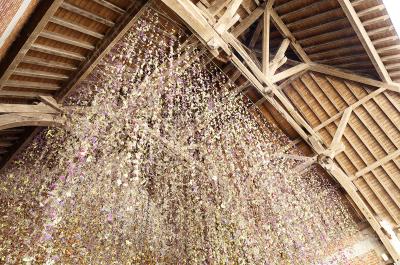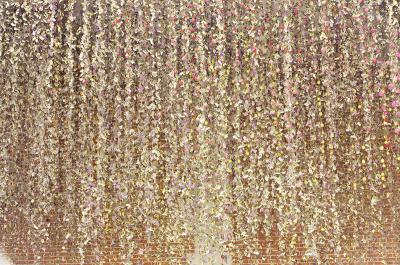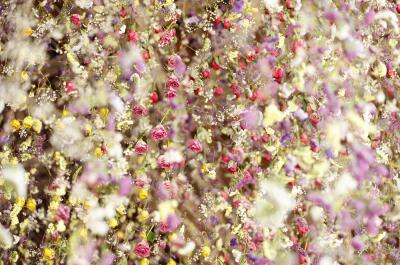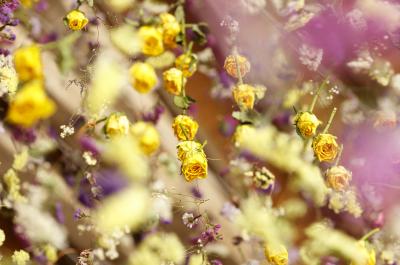J. Rebecca Louise-Law
"Le jardin préservé"
Rebecca Louise Law is known for the way she transforms space into colourful poetic universes by suspending hundreds or even thousands of flowers within its confines.
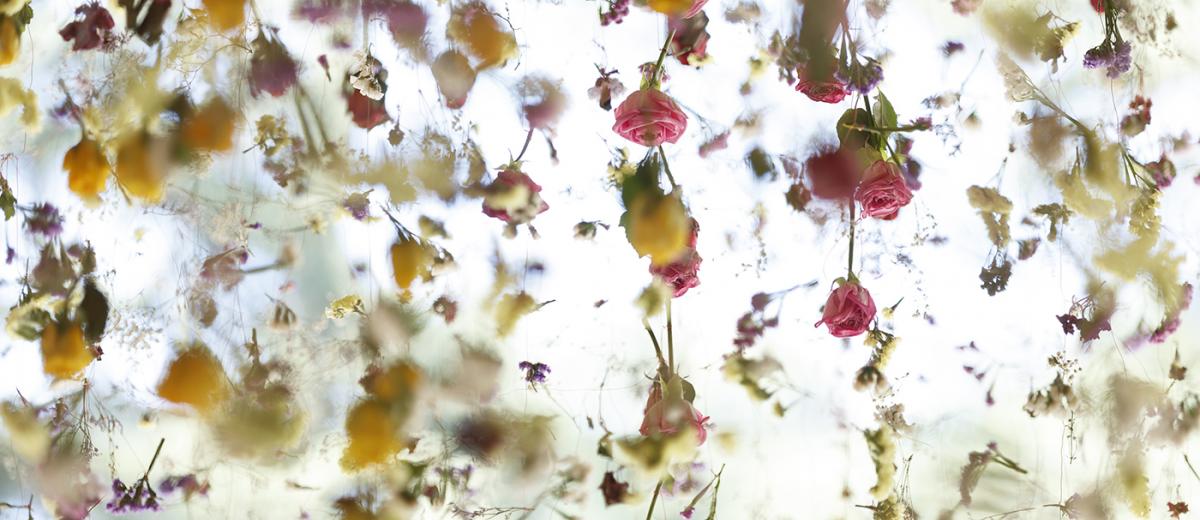
Rebecca Louise Law’s sculptures exalt the beauty of natural change. Her works evolve as nature takes its course, providing an alternative concept of beauty by embracing preservation and deterioration alike.
Rebecca Louise Law works with fresh and dried flowers, allowing the work to evolve naturally. Her installations are designed to last indefinitely, with each component attached individually, and bear witness to the changes of shape and colour produced as time goes by.
BIOGRAPHICAL NOTES
Rebecca LOUISE-LAW
GREAT-BRITAIN

Rebecca Louise-Law à Chaumont-sur-Loire, 2017 - © Éric Sander
A London-based artist who trained at Newcastle University’s School of Arts and Cultures in England, Rebecca Louise Law has worked with natural materials for 17 years, a practice that involves constant exploration of the relationship between nature and humankind. Her work includes philosophical and spiritual aspects: each flower is selected for a particular reason. The copper wire she uses to fix them in place has become her trademark. Colours are chosen and organised with meticulous care.
The artist has exhibited her installations in a wide variety of venues, from galleries to churches: her “The Flower Garden Display’d” project saw her suspending a total of 4,600 flowers from the vaulted ceiling of a church.
"I like to capture and cherish small beautiful natural objects to create artworks that can be observed without the pressure of time. Preserving, appreciating, celebrating and sharing the beauty of the Earth with the world is what motivates me”. Rebecca Louise Law
"The power of Rebecca’s installations lies in their perpetual transmutation. The living flowers move exquisitely through the natural stages of deterioration: they wilt, lose their colour and dry. By leading visitors along this path of deterioration, Rebecca extends the perceived limits of the beauty of flowers, imbuing them with an artistic value that makes them more than mere objects of decoration”. Amanda Krampf, Director of the Chandran Gallery
